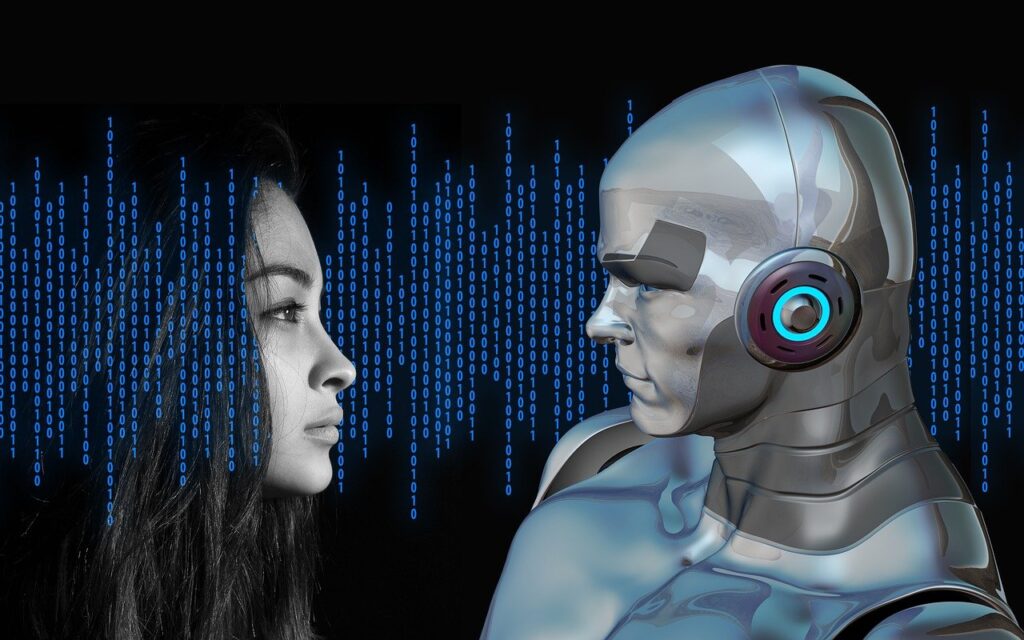Do Customers Prefer Interacting with People Rather than AI?
For a long time, the most essential and largest companies weren’t concerned about customer relations; you’d often have to turn to a small business to get a reliable customer service department. However, as the internet has rapidly increased the competition in almost all sectors, people have more choice as to where they make purchases.
For many, the quality of customer service is essential. Hubspot finds that 73 per cent of customers stay loyal to brands when they have good customer service representatives. Furthermore, two-thirds of customers would pay more to get a better customer service experience. While companies continue to seek to streamline and cut costs in this department, such as by utilising chatbots from Intercom, there’s evidence that customers now seek human interaction over using an artificial intelligence program.
Crafting the customer service experience with big data and AI
As both are heavily computerised processes that are relatively new to the mainstream audience, some people get artificial intelligence and big data confused, or at least, some aspects of each.
Big data deals with inputting huge amounts of raw data and then cleaning and organising it into something that’s usable. AI, on the other hand, is the output of data in response to interactions or command. While the two are separate in their operations, big data does complement artificial intelligence learning.
AI becomes better in its results with the more data that it’s given, whereas big data needs an analysis program to complete its cleaning of huge data stacks. In one of its more baseline, customer-facing forms, AI can be seen in action through the likes of Apple’s HomePod, which has Siri built-in.
When combined with big data, a similar type of AI can be utilised as a part, or even the entirety, of customer services. This is because the AI needs to be smart to deal with any question that a customer can throw their way, as well as being adaptive to their tone. In fact, XenonStack names reasoning, language processing, and learning as the ultimate goals for an artificial intelligence program.
Much of this is already being put on display in the open market, but after a few years of using AI customer services, some customers now desire a human touch.
Trusting humans over robots
There’s an innate distrust of machines, particularly computer programs that pose as humans. Many still can’t quite comprehend how powerful AI programs are, and so dislike interacting with such customer service set-ups.
That said, many have reason to think this, either due to poor AI support in the past or the fact that human communication is one of the best ways to resolve problems. Much of the time, people will have searched the internet or the company’s website for answers, so they want an expert to help with what is perceived to be a complex issue. It was also found that live chats with humans outperformed interactions with chatbots. For the most part, people don’t expect chatbots to be capable of solving their problems, with reports finding that less than one-third of customers think that virtual customer service reps can solve customer service issues, and 86 per cent of people preferring to a human representative.
One of the most famous chatbots in the world is the virtual assistant Amy for HSBC. While the technology has been lauded, Amy is still only one part of the HSBC customer support section, with several human routes also available. With so much of our lives becoming more reliant on computers, customers take note when the effort is put in to humanise their experience.
This can be seen in the range of table games like blackjack available at Betway, where the live table games that connect to a human dealer in real time are starting to attract more players than the all-digital games. Humans offer a better customer experience than AI does right now; this fact is also apparent in the examination of customer service satisfaction, which saw John Lewis and its all-human customer service team continually rank among the best.
Where is AI deployed effectively for customer services?
Despite the evidence that customers want to talk to a human representative when they have a customer services issue, most modern people are still driven by a fundamental desire that keeps AI in the loop: convenience.
Convenience is king in the modern market, from product applications to resolving an issue. 71 per cent of customers want to solve their issues on their own. The key is offering speedy solutions and first-contact resolution. AI needs to calculate and respond with clear-cut solutions in moments, or realise when it’s out of its depth and put the customer in touch with a human rep.
One way in which this can improve the customer experience is if deployed as a method of handling returns enquiries, as noted by BDAN. In this instance, the AI only needs to receive a few answers and can then quickly file the return and inform the customer of their next steps. You may not have noticed it yet, but Amazon’s online customer service messaging assistant is actually a chatbot. It talks similarly to a human and finds quick solutions to problems ranging from item information to returns and refunds. There’s also the example of Feldman Automotive in Detroit, Michigan, which has deployed a chatbot to converse with customers via Facebook Messenger.
AI certainly has its place in the customer service sphere, but as it stands, consumers seek human help for the problems that are too complex for what they deem to be an auto-response robot.

























